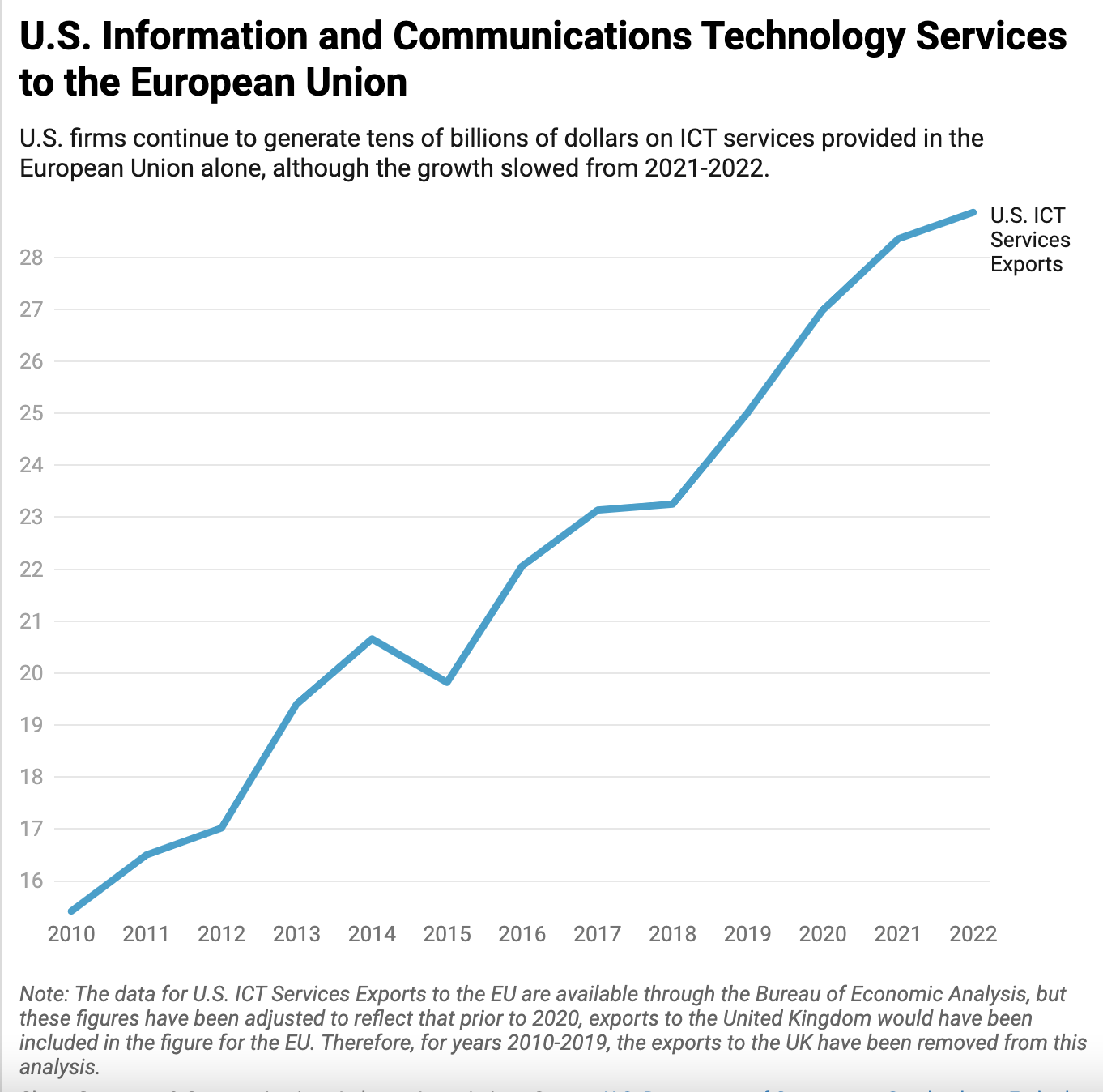Why Misinformed Assumptions About Digital Markets Matter
This post is part of a series covering different studies on antitrust enforcement of digital services released by various academics, think tanks, and regulatory agencies. First in the series is a review of the Report on Digital Platforms by the George J. Stigler Center at the University of Chicago Booth School of Business.
Scholars, think tanks, and regulatory agencies have all chimed in on how antitrust laws should be applied in the context of digital platforms. Early this May, the Committee for the Study of Digital Platforms from the George J. Stigler Center at Chicago Booth released its own 100-page report (“Stigler Report”), which I have summarized here in 6 pages. The Stigler Report calls for greater antitrust enforcement of digital platforms and the creation of a sectoral regulator that would enact ex ante regulations relevant to digital markets. While policymakers should welcome research and novel policy proposals, they should be wary of those that mischaracterize the complex features of digital markets or conflate competition issues with other policy issues. Otherwise, antitrust policies could backfire and harm competition. As I explain below, the Stigler Report proposes recommendations that rely on troubling assumptions about the Internet industry that warrant scrutiny.
Digital Platforms: Destined for Bigness?
The authors of the Stigler Report argue that “digital platforms” (which they use liberally to refer to well-known large digital service providers) are uniquely prone to fostering monopolies. The authors contend that among digital platforms with strong “network effects”—where the value received by one network user increases with the number of people in the network—larger networks have an inherent advantage over smaller networks. A winner-take-all market is therefore more likely to emerge, giving rise to the need for strong policy intervention. But the more recent antitrust literature suggests that other factors counterbalance network effects and the resulting incumbency advantage.
First, digital services can differentiate themselves like any other business. The improvement in user experience, product design, and quality of matching goes a long way. The Stigler Report suggests that “a potential rival for the market can only overcome the incumbency advantage of established networks through significant innovation.” But as economists David Evans and Richard Schmalensee point out in Matchmakers, the history of entry shows plenty of recent examples in search, social networking, and e-commerce that presented differentiated products or higher-quality services that dislodged the incumbents. The seemingly invincible Internet platforms of the early 2000s proved to be vulnerable to the challenge of new entrants. More recently, companies like Snapchat and Slack gained millions of users despite established social media websites and messaging tools.
Second, network effects could work in reverse. In the same way that growth in the number of participants could lead to greater value, which in turn contributes to growth in a positive feedback loop, the decline in users could reduce the value of the network and further divert users away from the network. On multi-sided platforms, indirect network effects could work in reverse as well. For example, fewer users on a social networking site means not only fewer users of the social network but fewer companies interested in advertising on the site as well. The Stigler Report fails to acknowledge that direct and indirect network effects could work against incumbents as well.
Third, consumers on one or more sides of a multi-sided platform engaging with multiple service providers rather than being loyal to one (“multi-homing”) increases competition and facilitates entry. Whereas a consumer is incentivized to stick to one provider for a service that requires installment of physical equipment, a consumer faces very low costs when switching from one digital service to another. As consumers of digital networks can use several at no additional cost, they can try an entrant’s services without leaving the incumbent. Although the Stigler Report notes that multi-homing lessens network effects, it critically underestimates the extent to which consumers can and do multi-home. For example, the Report contends that consumers are not aware of the costs of failing to switch, partly because the free services on both incumbent and rival platforms do not allow consumers to compare prices to choose a superior service. But the free nature of the platforms precisely allows users to judge quality by using the service, rather than relying on price as a proxy. Companies are thereby incentivized to compete on welfare-enhancing features other than price. And on the opposite end of the spectrum, the digitalization of services has increased the transparency of prices. Ad placement, for instance, is now all about data-driven metrics. Because marketers are directly compensated for switching to another platform through higher return on investment on their ads, they are encouraged to multi-home. This competitive pressure from multi-homing by marketers has encouraged ad platforms to innovate.
On the whole, the Stigler Report downplays the investment in innovation by multi-sided platforms to remain competitive. Network effects do not guarantee a multi-sided platform’s success. Innovation is key to attracting the modern consumer, who faces a glut of choices.
Burden-Shifting: Presuming Anticompetitive Harm
To correct the alleged build-up of market power among tech companies, the Stigler Report recommends many drastic policy options, one of which is overhauling the burden of proof standard under U.S. antitrust law. Under a monopolization claim pursuant to Section 2 of the Sherman Act, the government has the burden of proof to demonstrate that the defendant possesses “monopoly power” and engaged in “exclusionary conduct.” This allocation of burden is rooted in the long-standing Chicago school of thought that the over-deterrence of welfare-enhancing activities is more harmful to competition than false acquittals. Given the harm arising from letting some monopolies off the hook, the Report recommends that anticompetitive harm be presumed on the basis of preliminary showings and that the burden of exculpation be shifted to the defendant.
Estimating the potential cost of any erroneous policy decision is no easy task. How to best minimize the sum of both Type 1 and Type 2 errors in an antitrust enforcement action should be a subject of further economic research. But the Stigler Report goes too far when there is no legitimate justification to “rebalance” the scales. Presuming anticompetitive harm would hinder pro-competitive mergers, delay welfare-enhancing innovations, and increase litigation costs. Altering the default baseline would incentivize companies to challenge pro-competitive behavior by their rivals. Companies may avoid vertical mergers or other pro-competitive deals out of fear of growing “too big” and facing antitrust enforcement. Forgoing the economies of scale and growth in business could delay the launch of products and slow innovation. The original rationale behind the U.S. jurisprudence on the antitrust burden of proof still remains relevant to multi-sided platforms.
Lowering the evidentiary burden for agencies poses other problems too. Professor Thomas Lambert from University of Missouri School of Law, who participated in the 14th session of the FTC’s hearings on Competition and Consumer Protection in the 21st Century (which DisCo covered), raised the public choice problem with antitrust authorities. In theory, regardless of who has the burden of proof, federal agencies with antitrust expertise would come to a sound decision, informed by well-established economic principles in antitrust analysis. However, Professor Lambert cautioned that the expertise could breed “hubris” and over-confidence. He reminded that government officials are also rational, self-interest maximizers. Overseeing a big antitrust case could bolster one’s resume; the personal incentives could lead even a well-equipped federal agency to push towards excessive antitrust enforcement. This is yet another reason in favor of the traditional requirements for the government building an antitrust case. Facts must be rigorously examined before companies are proven guilty of anticompetitive behavior, not the other way around.
Ex Ante Regulations: Cart Before the Horse
The authors of the Stigler Report also call for the creation of a sectoral regulator that would implement forward-looking regulations for the digital sector. The Report notes that the pace of antitrust enforcement is too slow and that a sectoral regulator would be able to move quickly as to address competition issues. But is a regulator acting quickly better in this situation? Because digital markets move and develop new technologies so quickly, antitrust enforcement without a thorough assessment of the evidence could be harmful for a number of reasons. Ex ante regulations that are designed with particular technologies in mind could be obsolete by the time they are implemented. Antitrust enforcement that proceeds on a case-by-case basis ensures that the remedies are tailored to the parties in suit and not disproportionate as to the anti-competitive harm that they have committed. Blanket regulations of Internet companies en masse—when their technologies and business models vastly differ—could in fact diminish credibility in antitrust as a tool to protect consumers from true monopolies.
Then who should regulate these digital services? This question assumes that the digital service providers all operate in the same industry, share the same features, and therefore warrant a single regulator. The reality is that these businesses operate in many different markets and cannot be pigeon-holed into one silo. In fact, pursuing “platforms” as a regulatory basis without a clear idea of what the term refers to could give rise to greater risk of manipulation and regulatory capture. Rather than drawing lines in the sand to divvy up the businesses into artificial categories, the better exercise would be to find ways to bolster existing legal frameworks to solve targeted issues. Existing U.S. privacy, consumer protection, and competition laws cover the vast majority of concerns that are raised in the Stigler Report. For competition-related issues, the FTC now has 100+ years of specialized expertise that policymakers can rely on. Given the public choice problem discussed above, it is important that antitrust experts make decisions solely based on competition issues, rather than non-economic policy goals like social inequality that require other policy solutions. Allocating more resources to the FTC would also be a much less costly and logistically practical alternative to creating another federal agency from scratch.
As policymakers wade through the plethora of policy options to meet the demands of the fast-moving high-tech industry, they must stay vigilant. They must be familiar with the dynamics of how Internet businesses operate and how they compete. Misguided policies could harm some of the most innovative, productive, and pro-consumer industries in the U.S., hurting consumers in the end.
Karen Kim is a Law Clerk at the Computer & Communications Industry Association and a J.D. Candidate at Columbia Law School, expected to graduate in 2021.








